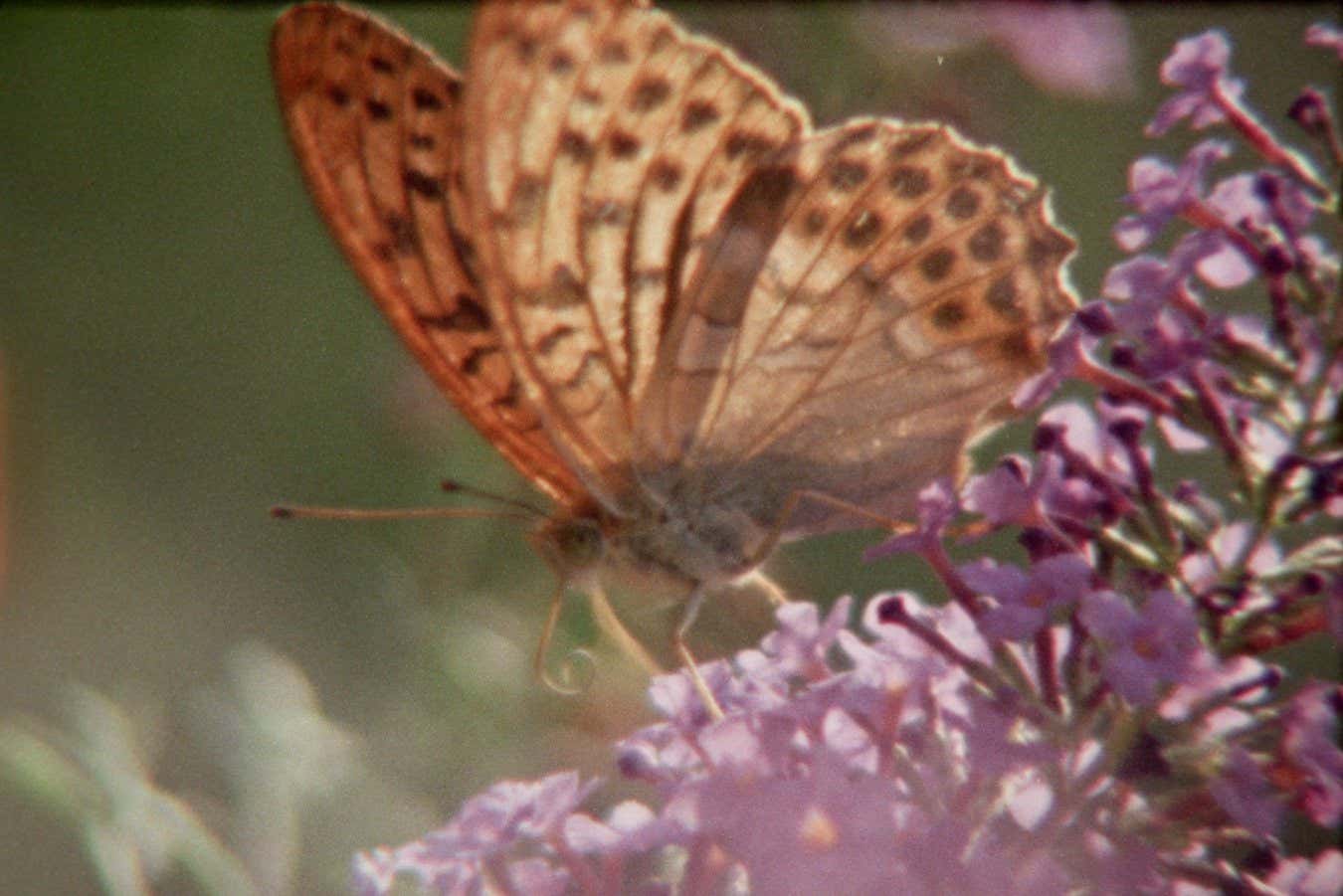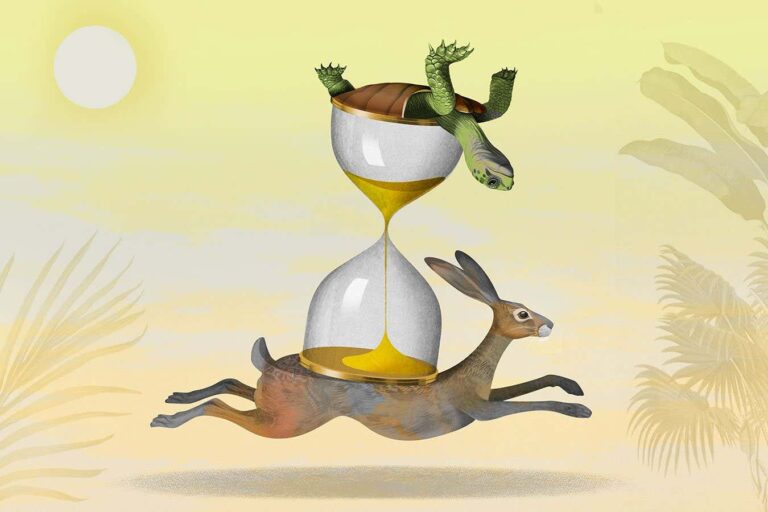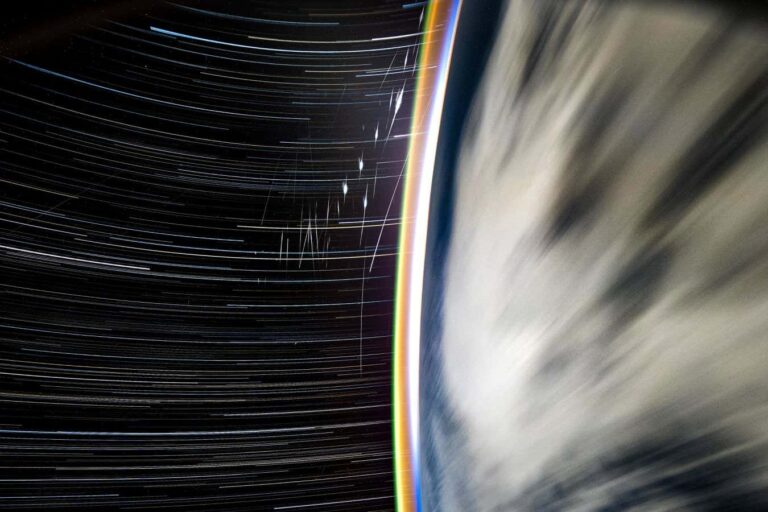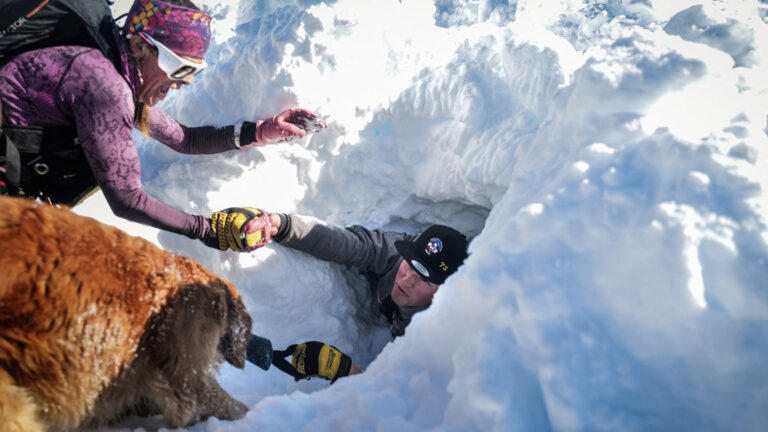

Super 8 film captured this close-up of a silver-washed fritillary butterfly
Nature Hunter Film Ltd
Super Nature
Ed Sayers, In UK cinemas in 2026
Ed Sayers, a director of commercials and music videos, has a passion for Super 8, a motion-picture film format released in 1965 by Eastman Kodak. He’s not alone: the dinky film cassettes survive because of the advocacy of a small global community of film-makers.
What marks Sayers out is his organisational ability. His first feature, Super Nature, which premiered at the London Film Festival last month, assembles Super 8 footage from 25 countries shot by 40 film-makers and local enthusiasts who captured the natural world near where they live.
When I read the premise of this movie, I will admit I was buckling in for 82 minutes of sparrows and house cats, but boy was I wrong.
While the film’s distributor BFI is making much of its “green” credentials, what with it being a globe-spanning documentary that racked up precisely zero air miles, worthiness is a poor sales pitch. Better, surely, to emphasise how strange everything looks in this handheld, lo-fi format.
Super 8, says Sayers in voiceover, looks as though “someone had painted your memories for you”. The literal truth of this becomes apparent as you settle into the medium’s glare, flare, shakiness and shifts of hue and tone. The Super 8 world is closer to the one we see: it isn’t polished, posed, well-lit or even perfectly focused, but nor is the world.
“
Among many charming moments in the film is the observation that puffins ‘have the kindest eyes’
“
Yet it is often devastatingly beautiful, and so is this film. A few of the more ambitious shots featuring the smallest, fastest, most retiring creatures are hard to make out. But an animal isn’t lesser because we only glimpsed it. The one sequence that didn’t work for me was of migrating geese. While beautifully shot and edited, the set-up (microlights and two cameras) was too ingenious, too “staged”. Better to lie in a puddle in the rain with a plastic bag over your head, filming a snail.
Big-budget nature film-making takes the diametrically opposite approach, revealing the world as the eye cannot possibly see it (or as it may not exist). The impulse to reveal new worlds is admirable –and I maintain that Walking With Dinosaurs is a joy – but I can’t help wonder if viewers, drunk on perfectly lit, framed and timed marvels, wouldn’t become jaded.
Super Nature shakes things up wonderfully. Structurally, it is built around the story of its making. Accompanying every sequence (of flamingoes, worms, coral and more) is each film-maker’s voice, explaining what the footage means to them. Among many charming moments is the description of the sound puffins make as they run (clownish, as though they were wearing outsize slippers) and the observation that “they have the kindest eyes”.
The testaments can be inspiring: some film-makers took to Super 8 because they needed a new way to see the world after misfortune had shrunk their lives to a point. Others trot out green pieties; a few should stick their heads under a cold-water tap (in ibex you can, apparently, see the wisdom of the mountains).
Then there is Sayers’s own story. Act one: the director has a grand ambition – to record the natural world, using vintage tech and local film-makers. Act two: the director loses hope, editing footage of floods, fires, Ukrainian trenches and plastic garbage. Act three: the director is cheered and the project redeemed by a seal’s playful antics.
It’s as good a narrative frame as any, but perfectly predictable, in a way the footage never is.
Simon also recommends…
Film
The Silent World
Jacques Cousteau and Louis Malle
Though not the first to show the ocean depths in colour, Cousteau and Malle’s 1956 documentary changed our view of two-thirds of the planet.
TV
Walking With Dinosaurs
Tim Haines
This six-part BBC documentary from 1999 (rebooted in 2025) brought scientific rigour to its unashamedly dramatic depictions of the Mesozoic Era.
Topics:



